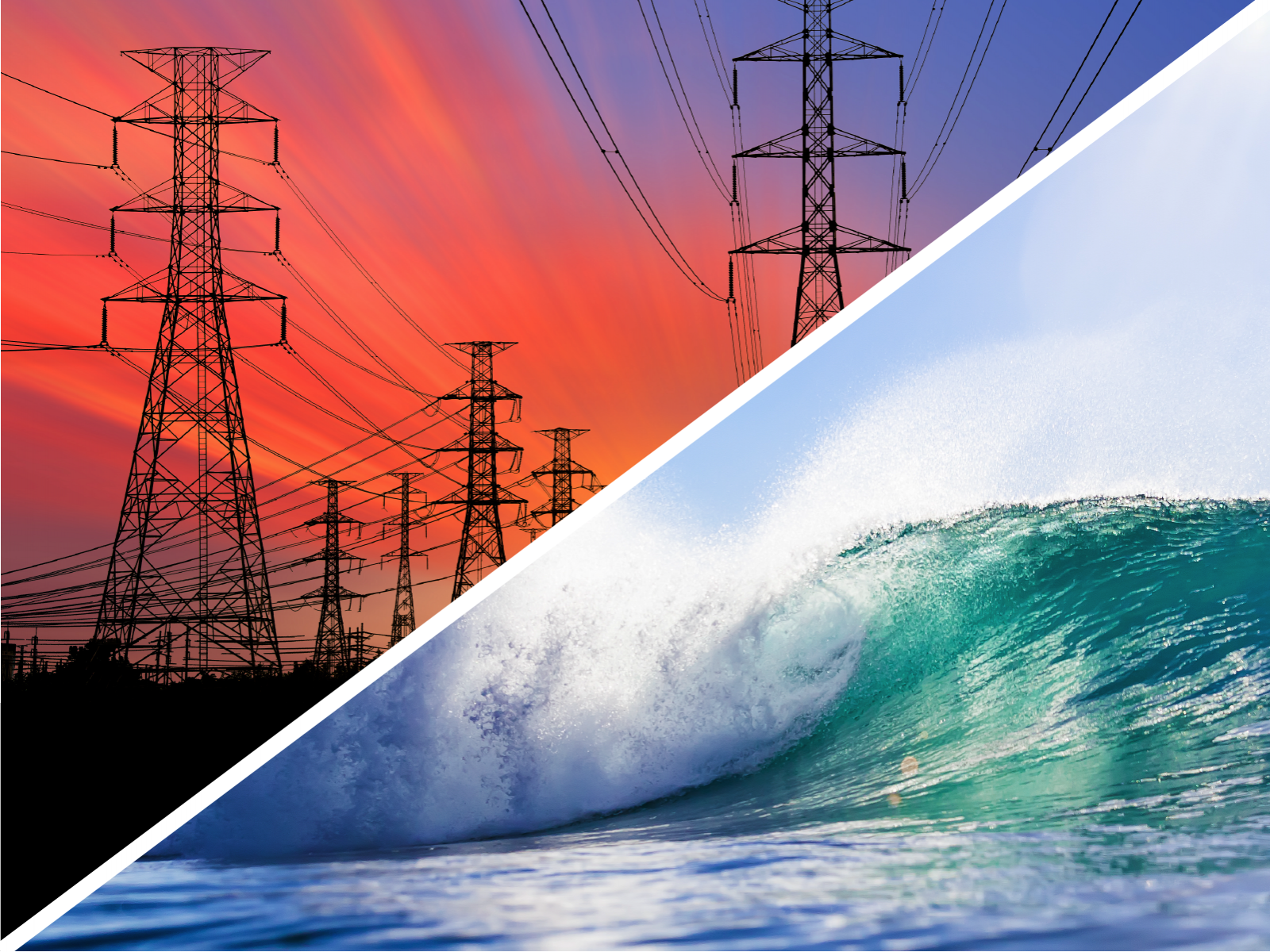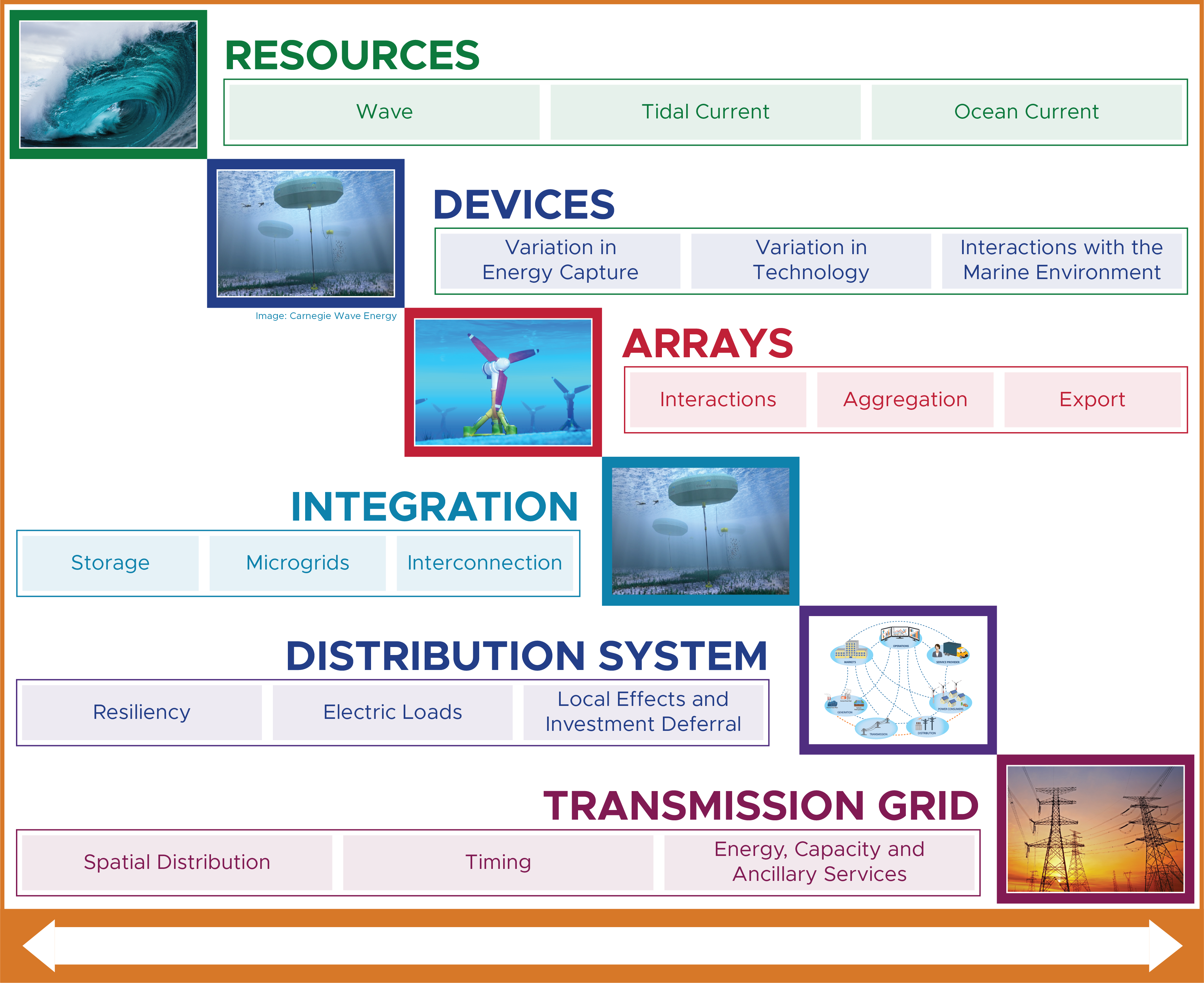Understanding the Grid Value Proposition of Marine Renewable Energy

Research topics
Lab-Level Communications Priority Topics
Grid

Marine renewable energy (MRE) technologies convert the energy of ocean waves and tidal, river, and ocean currents into electricity and other forms of usable energy. Yet its value proposition to the electric grid is not well identified or understood. MRE can provide energy without greenhouse gas emissions, but at a grid-scale, clean energy is readily available from other renewable resources at lower costs and risks. Certain aspects of MRE—for example, its location, relative predictability, generating profiles, and resiliency—should have unique benefits to the grid, but there has been limited research into analyzing and quantifying these benefits.
PNNL is working to help identify conditions where MRE can provide a competitive contribution to the electric grid, and to quantify that benefit. Recently, PNNL completed the first phase of the work which is detailed in, "Grid Value Proposition of Marine Energy: A Preliminary Analysis." A companion executive summary and brochure are below:
This activity requires a chain of technical work: taking advantage of our understanding and characterization of many types of energy within marine environments and simulated electrical output from technologies and device types. The devices harness MRE to link with grid models, optimizing generating resources, locational effects, and constrained conditions that make certain energy resources more or less feasible and available.

We are starting by outlining the landscape of MRE attributes, or benefits, and their potential value. The attributes are organized into the spatial or locational aspects, the temporal or timing aspects, and special applications to ensure most potential benefits are captured.